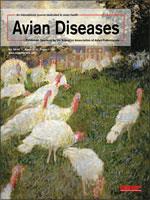There is a paucity of preclinical models that simulate the development of ovarian tumors in humans. At present, the egg-laying hen appears to be the most promising model to study the spontaneous occurrence of ovarian tumors in the clinical setting. Although gross classification and histologic grade of tumors have been used prognostically in women with ovarian tumors, there is currently no single system that is universally used to classify reproductive tumors in the hen. Four hundred and one 192-wk-old egg-laying hens were necropsied to determine the incidence of reproductive tumors using both gross pathology and histologic classification. Gross pathologic classifications were designated as follows: birds presenting with ovarian tumors only (class 1), those presenting with oviductal and ovarian tumors (class 2), those with ovarian and oviductal tumors that metastasized to the gastrointestinal tract (class 3), those with ovarian and oviductal tumors that metastasized to the gastrointestinal tract and other distant organs (class 4), those with oviductal tumors only (class 5), those with oviductal tumors that metastasized to other organs with no ovarian involvement (class 6), and those with ovarian tumors that metastasized to other organs with no oviductal involvement (class 7), including birds with gastrointestinal tumors and no reproductive involvement (GI only) and those with no tumors (normal). Histopathologic classifications range from grades 1 to 3 and are based on mitotic developments and cellular differentiation. An updated gross pathology and histologic classification systems for the hen reproductive malignancies provides a method to report the range of reproductive tumors revealed in a flock of aged laying hens.
Tumores de células epiteliales del tracto reproductivo de la gallina.
Hay una escasez de modelos preclínicos que simulen el desarrollo de los tumores de ovario en humanos. En la actualidad, la gallina de postura parece ser el modelo más prometedor para estudiar la aparición espontánea de tumores en el ovario en el ámbito clínico. Aunque la clasificación macroscópica y el grado histológico de los tumores se han utilizado para realizar el pronóstico en mujeres con tumores de ovario, no existe actualmente ningún sistema que se utilice universalmente para clasificar tumores reproductivos en la gallina. Se realizó la necropsia de 401 gallinas de postura de 192 semanas de edad para determinar la incidencia de los tumores del aparato reproductor utilizando tanto patología macroscópica y clasificación histológica. Las clasificaciones patológicas macroscópicas fueron designadas de la siguiente manera: las aves que presentaron únicamente tumores de ovario (clase 1), los que presentan tumores de ovario y oviducto (clase 2), aquellos con tumores de ovario y oviducto y con metástasis en el tracto gastrointestinal (clase 3), las aves que tienen tumores de ovario y oviducto, con metástasis en el tracto gastrointestinal y otros órganos distantes (clase 4), las aves que tienen tumores del oviducto solamente (clase 5), aquellas con tumores del oviducto con metástasis a otros órganos sin la participación de ovario (clase 6), y las aves que tienen tumores de ovario con metástasis a otros órganos sin la participación del oviducto (clase 7), incluidas las aves con tumores gastrointestinales y sin compromiso del aparato reproductivo (sólo tracto gastrointestinal) y las aves que no tienen tumores (normales). Las clasificaciones histopatológicas tuvieron un rango que va desde los grados 1 a 3, y se basaron en el desarrollo de mitosis y diferenciación celular. Una descripción patológica macroscópica actualizada y los sistemas de clasificación histológica de los tumores malignos reproductivos de la gallina proporcionan un método para reportar la gama de tumores reproductivos detectados en una parvada de gallinas ponedoras de edad.





